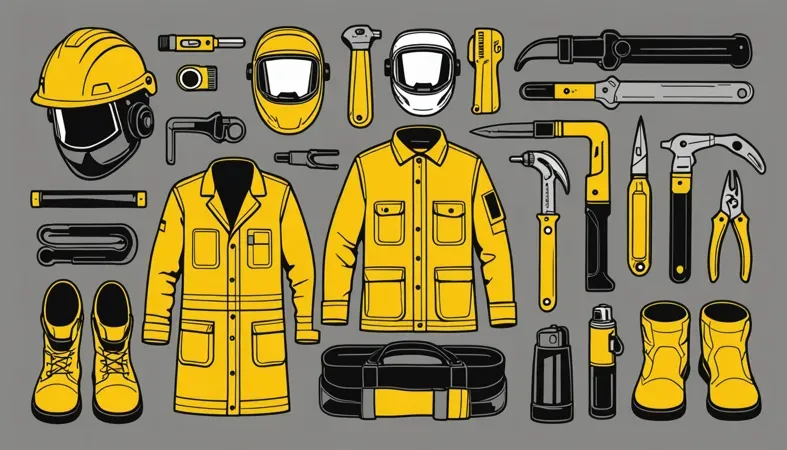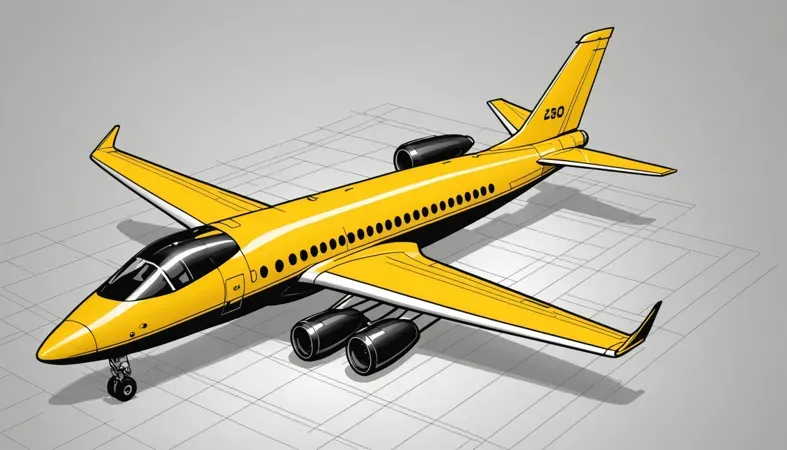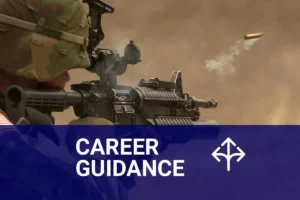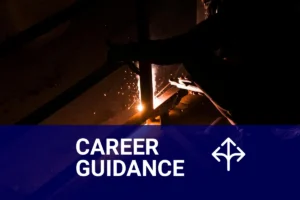What Training Do I Need to Be a Welder? | Requirements, Steps, & More
Published on: January 22, 2025 | Last modified: March 4, 2025
By: Tyler James
I regularly get inquiries regarding what training do I need to be a welder? It’s crucial to know the training required because skilled welders are in high demand. From my experience, proper training is the foundation for a successful welding career, leading to better job opportunities and higher pay.
In this guide, you’ll discover the types of welding training, the steps to become a welder, factors influencing these training requirements, issues unique to welding, aftercare and inspection tips, typical applications of welding training, and alternatives to traditional welding education. Whether you’re asking what do you need to become a welder or what you need to be a welder, this article aims to provide clear answers.
Contents
- What Training Do I Need to Be a Welder?
- Details On Welding Training
- Types Of Welding Training
- Steps to Become a Welder
- Factors Influencing Welding Training Requirements
- Issues Unique to Welding Training
- Typical Applications Of Welding Training
- What Are Alternatives to Traditional Welding Training?
- Frequently Asked Questions (FAQs)
- Conclusion
- Additional Reading
What Training Do I Need to Be a Welder?
You’ll need hands-on training and possibly a diploma or certification. Programs often cover skills like MIG, TIG, and stick welding. These techniques are key in industries like construction, manufacturing, and automotive because they create strong, lasting joints.
Details On Welding Training
Training in welding involves a mix of technical instruction and hands-on experience. You’ll learn various welding processes like MIG (Metal Inert Gas), TIG (Tungsten Inert Gas), and stick welding. In formal training programs, you’ll typically spend around 90% of your time on practical exercises and 10% on theory. Many schools require at least 1,000 hours (About 25 Weeks) of training to prepare you for certification.
Expertise in welding requires knowledge of different materials, joint designs, and safety protocols. You also need to understand various welding equipment, such as welding machines and protective gear. Proper training ensures you can handle these tools safely and effectively.
Here’s what you should do: Get a diploma or certificate from a reputable welding school. Most employers prefer candidates who have completed the necessary training and hold a welding certification, which shows you have the skills to be a welder. When considering what training you need to be a welder, remember that hands-on experience is as crucial as theoretical knowledge.
Types Of Welding Training
What types of training do you need to become a welder?
Apprenticeship Programs
Apprenticeships combine hands-on experience with classroom learning. Start by finding a registered apprenticeship in your area—these usually require a high school diploma or GED. Contact local unions or employers offering programs where you can learn from experienced welders over three to four years.
Trade School Courses
Trade schools offer focused training in various welding techniques. Generally, you’ll need a high school diploma for enrollment. Enroll in programs lasting six months to two years, covering MIG, TIG, and stick welding, among other skills.
Community College Programs
Community colleges provide extensive education, often granting degrees or certifications. A high school diploma or equivalent is usually required. Enroll in a 1- to 2-year program to explore advanced welding methods.
Online Welding Certifications
Online courses offer flexibility if you’re working or have other commitments. Basic eligibility often includes a high school diploma. To obtain certification, find accredited programs that let you learn at your own pace, followed by practical assessments.
Military Welding Training
The military provides specialized welding training as part of technical roles. You’ll need to enlist and meet the necessary physical and educational qualifications. Start the enlistment process, then focus on earning certifications that apply directly to welding.
You should now have a good understanding of different welding training methods. In the next part, we’ll discuss the steps to become a welder.

Steps to Become a Welder
Here are the essential steps to train as a welder. Follow these to prepare for this rewarding career.
Research Training Options
Start by exploring welding programs in your area. Consider community colleges and vocational schools. Many offer a diploma or associate degree in welding technology. Check their curriculum for hands-on experience. Look for accredited programs that meet industry standards. You might find different types of welding, like MIG (Metal Inert Gas), TIG (Tungsten Inert Gas), or Stick welding. Each has its own approach. Take the time to figure out which suits your career goals. A comprehensive understanding of welding techniques can help you address issues such as what causes weld spatter.
Enroll in a Program
After your research, enroll in a suitable program. Ensure the school provides both classroom and practical experience. Most programs last from 6 months to 2 years, depending on the qualification you’re pursuing. Set aside time for study; dedication pays off.
Some programs offer financial aid or scholarships. Don’t hesitate to inquire about these! They can significantly reduce your costs while you learn welding.
Complete Hands-on Training
During your hands-on training, actively participate in workshops and lab sessions to practice welding techniques. Most programs include tens to hundreds of hours of practical work. This experience is critical; mastering tools and materials builds your confidence.
Engage in various projects during your training. Build relationships with instructors; they’ll provide valuable insights into the welding industry. Learning from real-life scenarios prepares you for job challenges later.
Obtain Certifications
Stay competitive by earning welding certifications. Certifications like AWS (American Welding Society) are highly valued. They showcase your skills and enhance employability. You’ll need to pass specific tests on different welding techniques to earn these certifications.
Check if your state requires specific licensing for welders. Rules can vary, so don’t leave it to chance. Keep your credentials updated; some certifications last up to three years before renewal.
Gain Work Experience
Finally, gain real-world experience by seeking internships or apprenticeships. Many technical schools partner with local employers, making it easier to find opportunities. Aim for at least 1-2 years of experience to refine your skills. The sooner you start working in the field, the better. Network with professionals in the field during your training. Join welding associations or attend workshops. This not only increases your knowledge but also opens new doors in your welding career. To ensure your safety while working, it’s crucial to prevent cancer from welding.
So far we covered the process to become a welder. Next, let’s look at the factors affecting welding training requirements.
Factors Influencing Welding Training Requirements
What factors shape the requirements for becoming a welder?
Type Of Welding
Different welding types, like MIG or TIG, require specific skills and training. MIG welding is ideal for beginners and typically takes about 6 months to master, while TIG may take over a year due to its complexity.
Industry Standards
Industries such as construction or aerospace have strict standards. You’ll often need a certification (Like AWS or ASME) to meet these specifications and comply with safety regulations.
Location and Regulations
In some states or countries, local laws dictate required training. Check your local welding codes and requirements, as they can vary significantly.
Level Of Certification Required
Some jobs demand higher certification levels. For example, pipe welders often need more advanced certification than general welders, affecting the depth of training required.
Personal Career Goals
Your goals significantly impact your training. If you aim for specialized fields like underwater welding, you may need extensive training beyond basic certification.
We have now covered the factors that impact welding training requirements. Next, we will examine issues specific to welding training.
Issues Unique to Welding Training
Let’s explore specific challenges in welding training.
Lack Of Practical Experience
Training often lacks hands-on experience. Check how many hours are spent welding versus on theory. Increase practical welding time to address this issue.
Access to Quality Instructors
Training suffers if instructors lack experience. To improve this, connect with the industry to recruit skilled veterans.
Resource Limitations in Training Facilities
Training often uses outdated equipment. Identify this by observing available tools. Invest in modern gear to enhance learning conditions.
Challenge Of Covering All Welding Techniques
Training may not include essential techniques like TIG (Tungsten Inert Gas) or MIG (Metal Inert Gas). Review course outlines to find gaps and incorporate a variety of methods in the curriculum. For those looking to expand their skills, mastering overhead welding techniques can be a valuable addition to their repertoire.
That covers the challenges specific to welding training. Let’s now take a look at aftercare, inspection, and advanced tips for welders.
Typical Applications Of Welding Training
People use welding for various construction projects. It also has unique applications such as:
- Aerospace Welding: This training focuses on joining lightweight metals for aircraft frames. It’s crucial for safety and performance. These skills are highly sought after in the aviation industry.
- Pipelines Fabrication: Welders connect pipelines for gas and oil transportation. Precise and durable welding is necessary to prevent leaks. This application’s popularity is rising as energy demands grow.
- Automotive Repair: Specialized knowledge helps welders fix critical vehicle parts. They repair frames and body panels to ensure safety and functionality. The auto industry constantly needs skilled welders for repair work.
- Heavy Equipment Manufacturing: Welding training meets the demand for strong joints in construction machinery. High durability is vital. Manufacturing firms value these welders due to increased machinery production needs.

What Are Alternatives to Traditional Welding Training?
There are several alternatives to traditional welding training programs. For example, online courses, like those from Udemy or Coursera, offer flexibility and can help you learn at your own pace. You can also look into hands-on workshops with local trade schools, as they often provide immediate skill application without a lengthy commitment.
Looking back on my experiences, one thing stands out: you don’t always need formal education to start welding. Some welders find success by starting as apprentices, getting on-the-job training while they earn. Keep in mind, it’s essential to have the right certifications, like AWS (American Welding Society) D1.1, to enhance your job prospects.
Frequently Asked Questions (FAQs)
Now let us look at some questions I typically get asked.
What Training is Needed for Welding?
Yes, specific training is needed for welding. Most welders complete a vocational training program or apprenticeships that last 6 months to 2 years. These programs cover safety measures, welding techniques, and blueprint reading to ensure you’re job-ready.
What Qualifications Do I Need to Be a Welder?
To be a welder, you’ll need certain qualifications. Typically, a high school diploma or GED is required, along with some hands-on experience or training in welding. Credentials like AWS certifications show you’ve met industry standards.
How Long Does It Take to Learn to Be a Welder?
It usually takes 6 months to 2 years to learn welding. This depends on your training path, whether it’s a certificate, diploma, or apprenticeship. The more you practice, the quicker you’ll gain the skills needed for various welding jobs.
How Do You Qualify for a Welder?
To qualify as a welder, you need training and experience. Most employers look for a combination of education, certifications, and hands-on skills. Completing a recognized training program vastly improves your job prospects in welding.
What Do You Need to Become a Welder?
To become a welder, you need a specific set of tools. Essential tools include a welding machine, gloves, safety goggles, and protective clothing. These tools protect you while you gain the necessary skills in welding.
Conclusion
Phew, that’s a lot to digest. We covered various aspects like types of welding training, steps to become a welder, factors influencing training requirements, issues unique to welding training, aftercare, inspection, and even alternatives to traditional training. Each element helps you understand what you need to become a welder.
So, what training do I need to be a welder? Essentially, you need hands-on experience, safety training, and possibly formal education like a diploma or certification. Don’t hesitate to get in touch for further assistance regarding the requirements to be a welder, since the right path can lead to a rewarding career.
If you’re interested in exploring additional resources about welding, feel free to return to What is Welding for more insightful information.
Additional Reading
- Howard B. Cary. (1997). Welding Manual. Upper Saddle River, NJ: Prentice Hall.
- O’Brien, R. L. (1991). Welding Handbook: Welding Processes, Part 1. Miami, FL: AWS.
Tyler is a passionate DIY welder and self-taught metal artist with years of hands-on experience transforming raw materials into functional and artistic creations. Specializing in MIG welding, Tyler crafts everything from custom furniture to outdoor sculptures, blending creativity with technical skill. Committed to making welding accessible, Tyler shares practical insights and project inspiration to help beginners and hobbyists confidently explore the world of metalworking.
American Welding Society, Construction, Hands-on Experience, MIG Welding, Vocational Education, Welder Certification, Welding, Welding Apprenticeship, Welding Techniques, Welding Training







